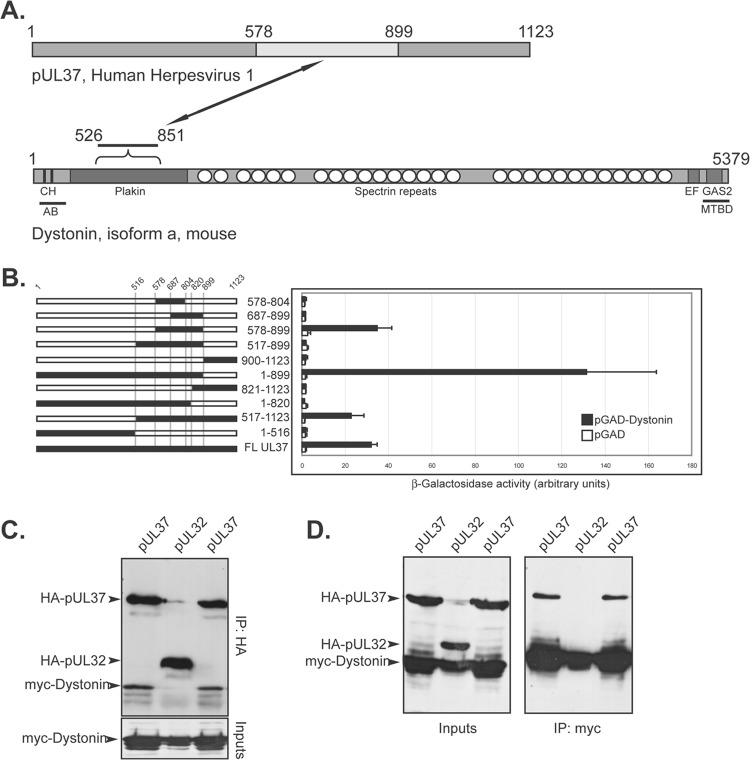Fig 1.
pUL37 interacts with the plakin domain of dystonin. (A) A yeast two-hybrid (Y2H) screen was set up using the LexA-pUL37 HSV-1 construct as bait and a cDNA library isolated from differentiated PC12 cells (rat neuroblastoma) as prey. pUL37 is shown on top, with the domain interacting with dystonin in light gray (residues 578 to 899, see panel B). A simplified domain map of the neuronal isoform of murine dystonin (isoform a) is depicted below pUL37. Note that dystonin is not drawn to scale compared to pUL37 and that although the plakin domain is common to isoforms a, b, and e of dystonin, only isoform a is shown here. CH, calponin homology domains; EF, EF hands; GAS2, GAS2 domain; AB, actin-binding domain; MTBD, MT-binding domain. Based on reference 20. The domain of dystonin interacting with pUL37 (526 to 851) is shown. (B) Different truncations of pUL37 (black lines, left) were fused to the LexA DNA-binding domain and tested for Y2H interaction with pGAD-dystonin, which contains the plakin domain of dystonin obtained from the initial Y2H screen, fused to the GAL4 activation domain (AD). pGAD alone was used as a negative control. The interaction was evaluated by quantification of β-galactosidase activity in liquid yeast cultures by an optical density at 420 nm (OD420) (right). Bars represent standard deviations of the mean. (C, D) Coimmunoprecipitation of HA-pUL37 and myc-dystonin. Vero cells were cotransfected with plasmids coding for HA-pUL37 or HA-pUL32 and the 526-to-851 region of rat dystonin (myc-dystonin) and were lysed 16 h later. Following immunoprecipitation with anti-myc A14 (C) or anti-HA Y11 (D) antibodies, cell extracts (inputs) and immune complexes (IP) were separated by SDS-PAGE and analyzed by Western blotting using anti-HA F7 to reveal the presence of HA-pUL37 and HA-pUL32 and using anti-myc 9E10 to reveal the presence of myc-dystonin. The coimmunoprecipitations between pUL37 and dystonin were carried out in duplicate for each set of conditions.

